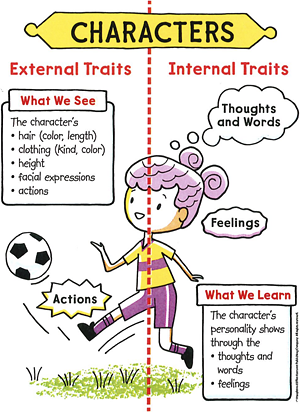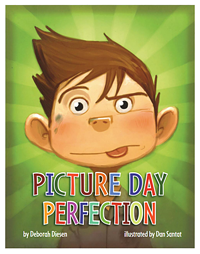Reading: Characters
Reading: Characters

Remember, characters are the people or animals the story is about.
There are two types of clues that help readers learn more about the characters in a book. Clues that describe what a character looks like on the outside are external traits. For example, authors might say a character is seven feet tall or has curly red hair.
Clues that describe a character’s personality or what the character thinks or feels are internal traits. For example, authors might say a character is shy when responding to a teacher or that a character always tries to help a friend in need.
You can look for clues about a character in the text and the illustrations, and you can use the details to understand why a character reacts the way he or she does.

You will reread parts of Picture Day Perfection to practice describing characters. The characters are the people or animals in a story. External traits are what we see about them. Internal traits are thoughts, words, and feelings.
You may discuss the questions below with someone.
Parent/Guardian: Check the student's responses with the answer key
, Reading: Characters (1.3.3).
- pp. 91-94:
- What words would you use to describe the boy?
- Why did you choose those words?
- How do the pictures give more information about the boy?
- pp. 98-99:
- What is surprising about what happens in this part of the story?
- What does the boy’s reaction tell you about him?
Texas Tech K-12
-
Address
Texas Tech Plaza | 1901 University Ave, Lubbock, TX 79401 -
Phone
(800) 692-6877 -
Email
ttuk12@ttu.edu

